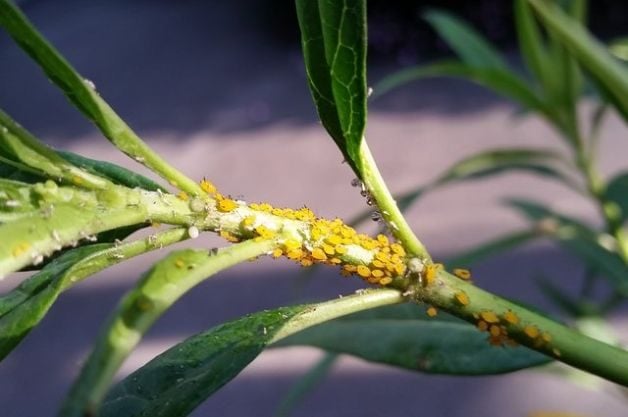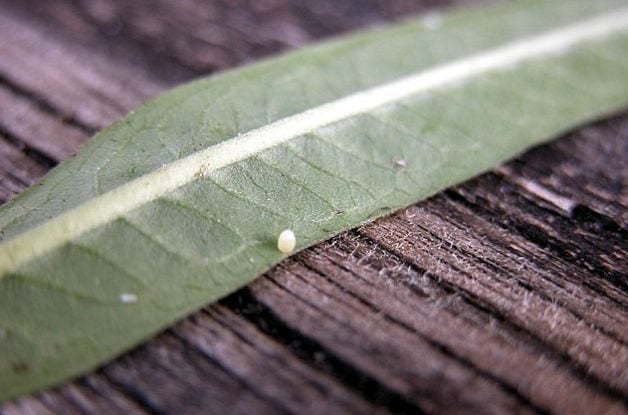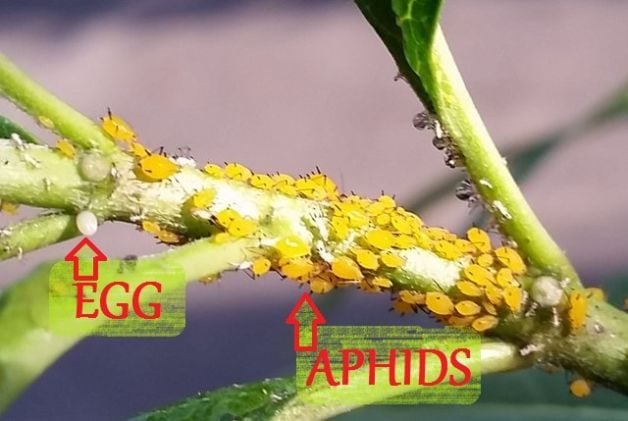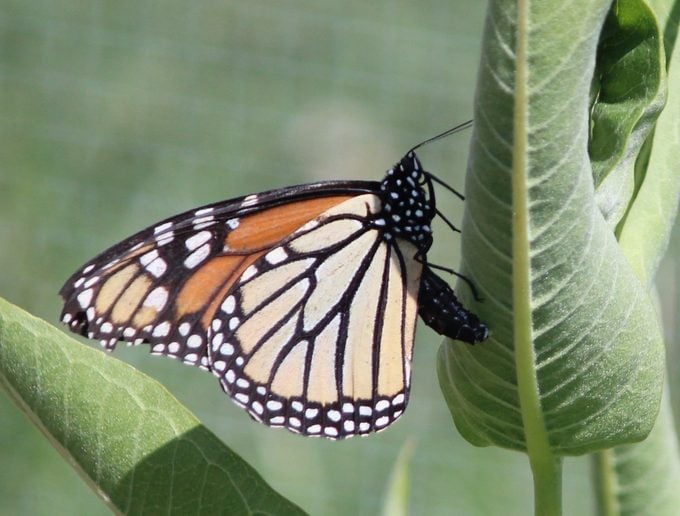Monarch Eggs or Aphids? How to Tell the Difference
Updated: Aug. 25, 2022
Look closely at your milkweed plants. Learn how to tell the difference between monarch butterfly eggs and aphids.

So, you’ve read the sober news reports about the decline of monarch butterflies, and decided to do something about it. You filled your garden with native milkweed plants, which are growing big and strong. You’ve even seen the brilliant orange wings of monarchs fluttering around your garden. Now it’s time to check the plants to see if you’ve had any success. You see something tiny on the leaves—but is it a monarch egg or something else? Pinhead-size monarch eggs are white and are laid singly on the tops or bottoms of leaves. Aphids are tiny yellow specks with black legs. These common pests are found by the dozens clustered near the plant stem.
Raising monarch butterflies: What you need to know.
What Do Monarch Butterfly Eggs Look Like?

Here’s how to tell whether you’re looking at monarch eggs or aphids in three easy steps.
- Monarch eggs are white or off-white. The eggs are ovoid in shape, and if you look very closely with a magnifying glass, you’ll see vertical ridges along the sides. As the tiny larva inside develops, the egg will darken slightly in color before hatching in about 3 to 5 days.
- Monarch eggs, of course, do not have legs. They also do not move.
- You’ll usually find a single monarch egg on its own, often laid on the undersides of leaves. However, you may also find monarch eggs on stems and flowers.
Discover fascinating monarch butterfly facts.
What Do Aphids Look Like?

- Aphids are bright yellow insects with six legs. If you see wriggling black legs, you’ve got aphids.
- Aphids tend to cluster in large groups along the stems.
If you spot aphids on your milkweed, don’t panic. The good news is that they’re unlikely to deter monarchs from laying eggs or keep the caterpillars from developing. However, a bad enough infestation can weaken the plant, and they look pretty unattractive. So how do you get rid of aphids?
First, and most important: No pesticides. This includes insecticidal oil and dish soap. These will kill any monarch eggs or caterpillars already on your plant (Follow the stages of the monarch butterfly life cycle). Instead, my preferred way to remove aphids is with a strong blast from a garden hose. Rinse the aphids from the plants using your fingers under the running water. You may not get them all, but it will be enough to make a difference. Be careful not to harm the monarch eggs and young caterpillars. This solution doesn’t last long, so you’ll need to do this once a week or so. Or, just learn to live with the aphids if you can. The monarchs won’t mind if you don’t!
Here are the monarch butterfly parasites and predators you should watch for.
Why Milkweed Matters for Monarch Eggs

Monarchs need milkweed to survive because the plant plays host to monarch eggs and caterpillars. Luckily, milkweed is easy for gardeners to grow, and with over 100 varieties to choose from, there are plenty of options native to your area.
Next, learn why monarch butterfly migration is simply magical.




















